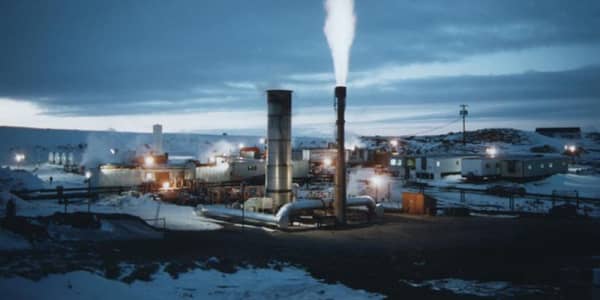Few industries have seen as much change in the last 25 years as finance.
Back in 1989, the U.S. was in the throes of the savings and loan crisis, and 534 banks failed. A decade later, the Gramm-Leach-Bliley Act tore down the walls preventing a single financial firm from owning insurance, commercial and investment banking operations, ushering in the era of the megabank.
Along the way, the once-obscure financial world became a glamorous sector.
The big Wall Street firms lured top talent from the nation's business schools. Multimillion-dollar paychecks for Wall Street CEOs were greeted with awe, not derision, and investment banks large and small provided the fuel to grow businesses—and, sometimes, bubbles.
Then, in 2008, the financial crisis helped to cement the reputations of the chiefs whose banks survived the economy's near collapse, while tarnishing those whose banks didn't. And the regulators who helped steer the country's way out of crisis were suddenly the new rock stars.
Only the final vote count will decide, but among the leaders on CNBC's list of 200 people who were most influential during the past 25 years, we reckon that figures like JPMorgan Chase chief Jamie Dimon, who helped turn his once-sleepy depositor into one of the world's most envied (and more recently, targeted) banks, and Warren Buffett, the globally-revered value investor and head of Berkshire Hathaway, are almost certain to make the cut.
Others, like Goldman Sachs CEO Lloyd Blankfein and brokerage-firm pioneer Charles Schwab probably stand a good shot, too.
But what follows is a list of shoo-ins that we think particularly deserving of inclusion, followed by a list of laggards to consider:
(Vote: Who mattered? Who didn't?)
The Shoo-Ins
Hank Paulson, former U.S. Treasury secretary. In 2008:
Paulson helped save the U.S.—and arguably also the world economy—from collapse.
Images of him scurrying around Washington that fall with a cell phone glued to his ear are powerful reminders of the urgency with which he had to get government and private enterprise together, in sometimes-painful confrontations. His legacy is still the stuff of parlor-room debate; he is credited with saving Bear Stearns by persuading JPMorgan to buy it, and is criticized for letting Lehman Brothers fail. For his part, Paulson has said repeatedly that the Lehman bankruptcy was unavoidable.
A reluctant public servant, Paulson was instrumental in taking Goldman Sachs public in 1999. He served as the company's CEO from that time until June 2006, when he left for the Treasury post. Goldman's public offering was a rebirth of sorts for the former partnership, allowing the investment bank to compete in an industry that was increasingly populated by megabanks.
Alan Greenspan, former Federal Reserve chairman:
After an 18-year tenure that ended in 2006, Greenspan took a drubbing for the easy-money policies that many believe helped create the ruinous housing bubble of the late 2000s. But his pro-growth, anti-regulation stances helped spark an era of protracted economic growth.
He was no stranger to crisis; having been made Fed chairman just two months before the October 1987 stock market crash, Greenspan used interest rate cuts to provide liquidity, or ease of money flows, and stem inflation—moves that would come to characterize his leadership.
(Read more: Why Ebbers and Lay should be on this list)
He led the U.S. economy through the Asian currency crisis of the late 1990s and the dot-com bubble bursting of the early 2000s, paving the way for the bull market years later and, debatably, the bust that soon followed. Greenspan has been an ardent defender of his legacy, maintaining that the financial crisis was nearly impossible to forecast.
George Soros, legendary investor:
For nearly 40 years, Soros' Quantum Fund posted average returns upwards of 30 percent before returning outside investors' money in 2011. Outsiders viewed Soros as an alchemist: An interpreter of broad economic policies into directional bond and currency trades—often making those trades heavily leveraged to reinforce that view.
In 1992, he bet the entire $10 billion fund against the British pound; when the bet forced a devaluation of the currency, Soros earned the nickname "the man who broke the Bank of England."
(Read more: Milken to Madoff: Villains who changed the world)
The trade netted $1 billion in profits in a single day, and is still considered the greatest currency trade of all time. Soros is seen as a catalyst in the late-1990s Asian currency crisis—and notched another $1 billion in gains last year in a bet against the yen at age 83.
The Overlooked
Dick Fuld, former CEO of Lehman Brothers:
Now practically a hermit, operating a small merger-and-acquisition advisory firm Matrix Advisors in midtown Manhattan, the 67-year-old Fuld presided over the largest corporate bankruptcy in history. That, of course, was the Sept. 15, 2008 closure of Lehman, the proud former cotton broker that had grown, with Fuld's help, into a large international investment bank, only to be toppled by its overzealous borrowing.
Lehman's bankruptcy followed months of brinksmanship by Fuld, who blamed short-sellers for hurting his bank's stock and failed to sell the ailing company. The event took the U.S. credit meltdown from disruption to crisis. The government's decision not to bail out Lehman is almost universally regarded as the biggest mistake made during the crisis.
In the wake of the crisis, Fuld has become a poster boy for mismanagement, the subject of case studies like the recent British paper cited by BusinessWeek entitled: "When Does Narcissistic Leadership Become Problematic?"
Lew Ranieri, former vice chairman of Salomon Brothers:
In the run-up to the financial crisis, Washington extolled homeownership as the American Dream, but Ranieri enabled the booming market—and made it affordable—by figuring out how to package, or securitize, residential mortgages for private investors.
He created the mortgage-backed security in 1977, but it wasn't until the late 1990s and early part of the century that fee-hungry Wall Street fashioned exotic and opaque risk pits from Ranieri's relatively straightforward invention. At its peak, the mortgage-backed securities market stood at $2.2 trillion.
Often called the godfather of the 2008 financial crisis (in the company of other vocal subprime lending proponents like Angelo Mozilo and Stan O'Neal), Ranieri still feels guilty, telling CNBC in 2011, "Being one of the founders, it's my problem. I talked about (the risks) starting in 2005, but… I didn't do a good enough job to stop it."
Bill Gross, co-chief investment officer of PIMCO:
It's hard to talk about the last quarter century without mentioning the bull market in bonds, and Gross, otherwise known as the "Bond King," is to bond mutual funds what Fidelity's Peter Lynch was to equity mutual funds in the late 1970s and early 1980s.
Gross co-founded PIMCO back in 1971, and today it is one of the world's largest asset managers. Over the last 15 years it's delivered an average annual return of 6.57 percent, outpacing the Barclay's U.S. Aggregate Bond Index, which has returned 5.36 percent on average during the same time period.
(Read more: Gross on Pimco: Better 'than we were before')
PIMCO saw outflows last year as investors turned cold on bonds and Gross made a wrong-way bet on the U.S Treasury markets in 2013, creating losses for the Total Return Fund of 1.34 percent—its worst annual performance since 1994.
Now Gross faces the challenge of re-energizing a PIMCO management team in flux after the recent departure of its CEO.




